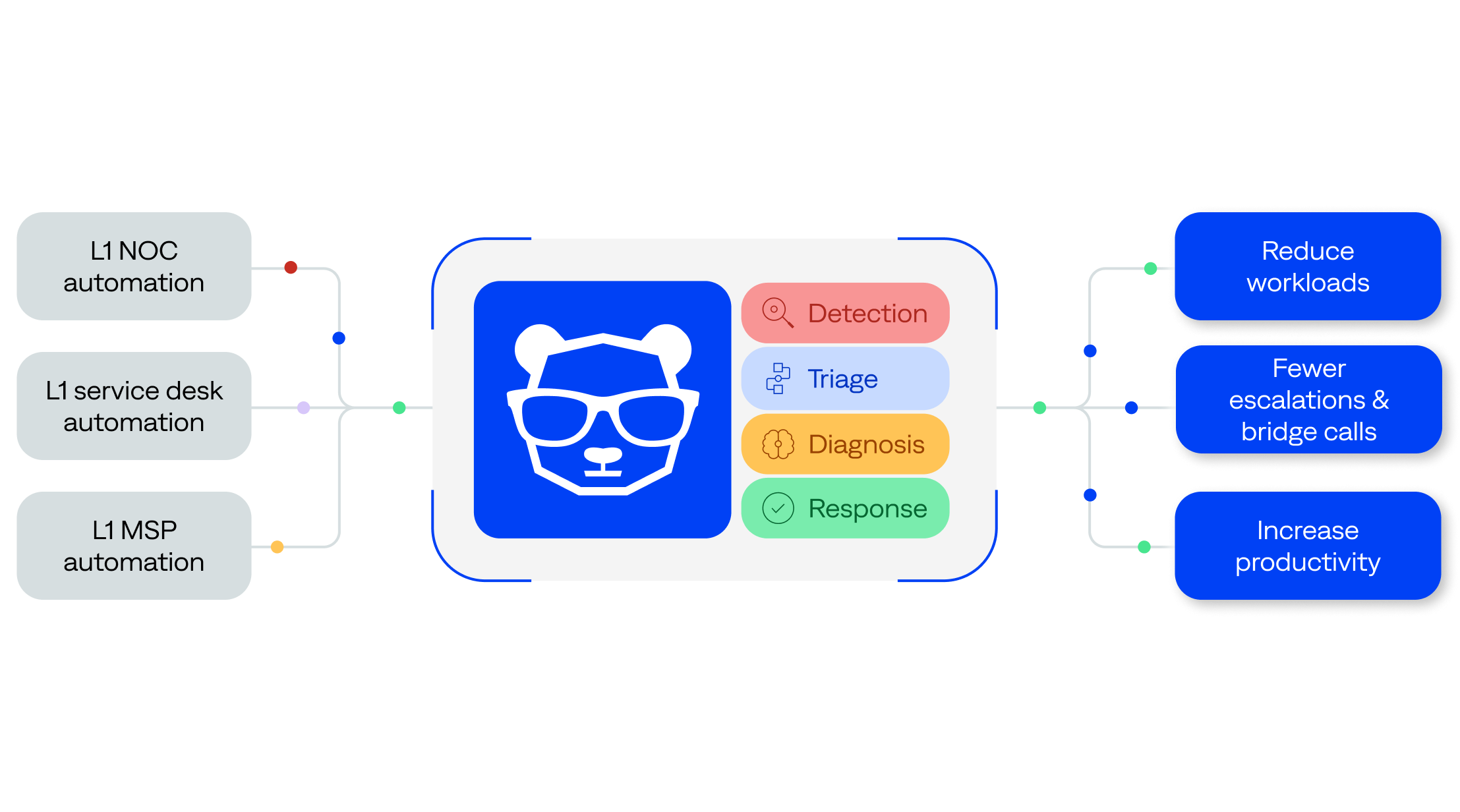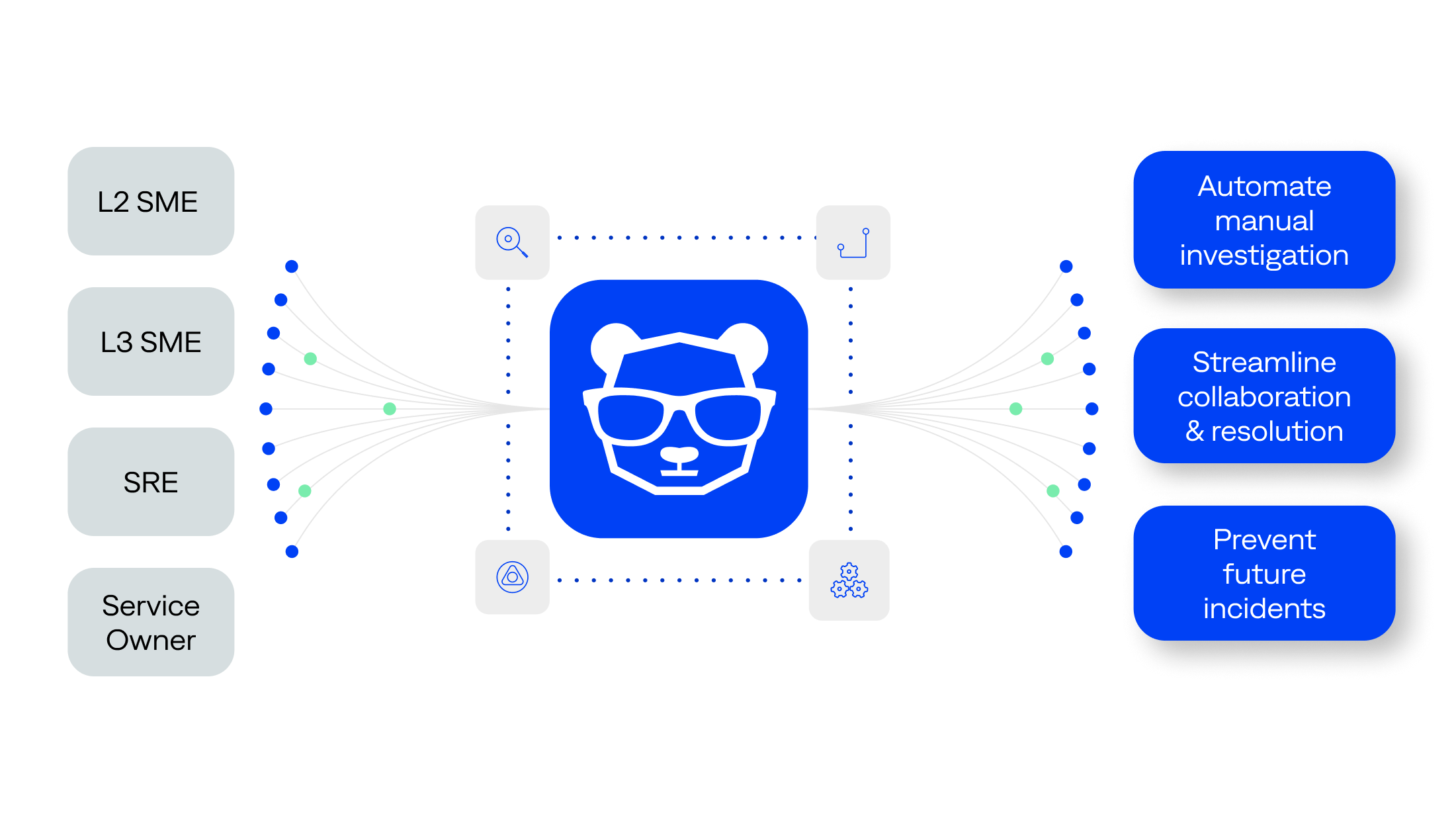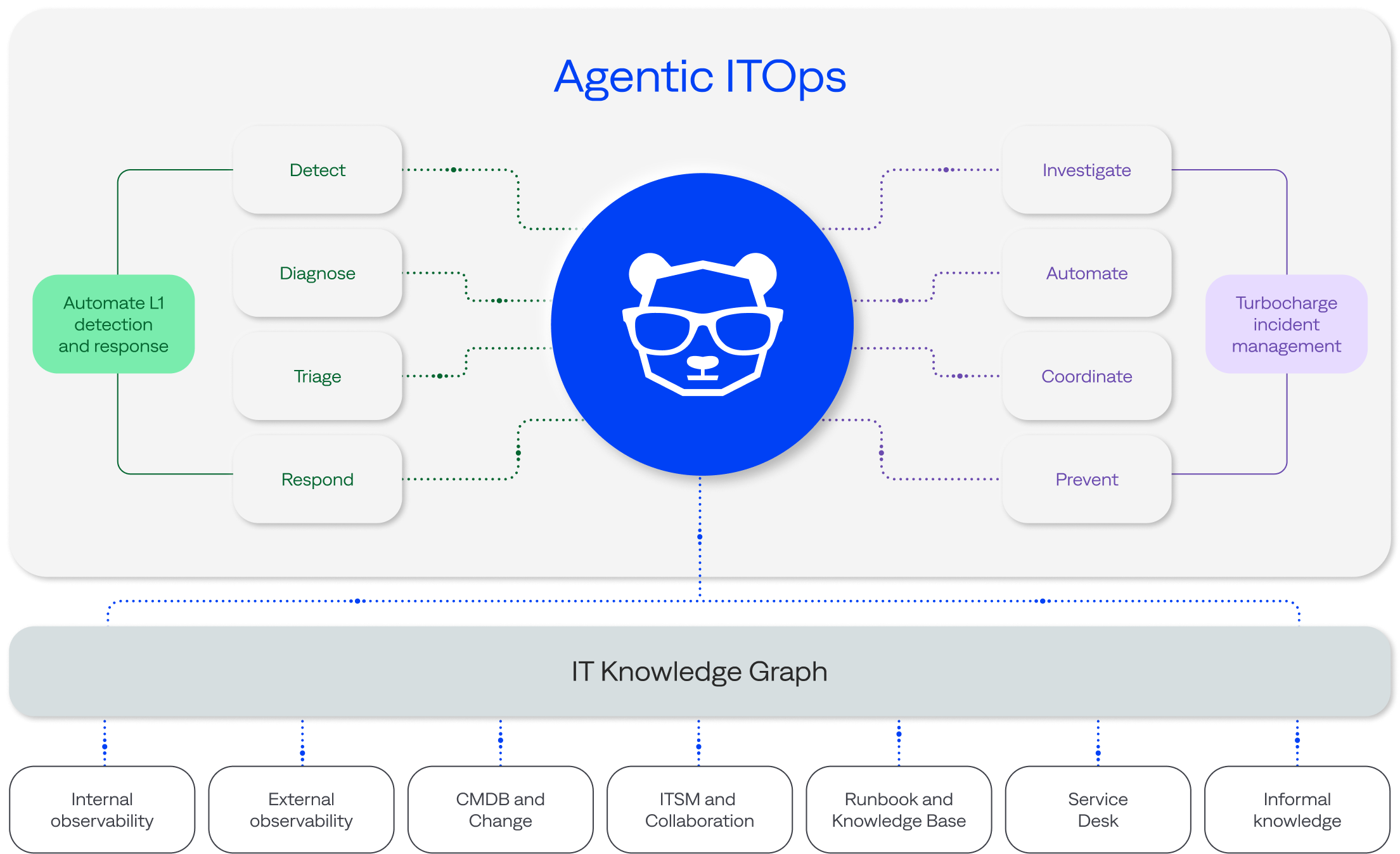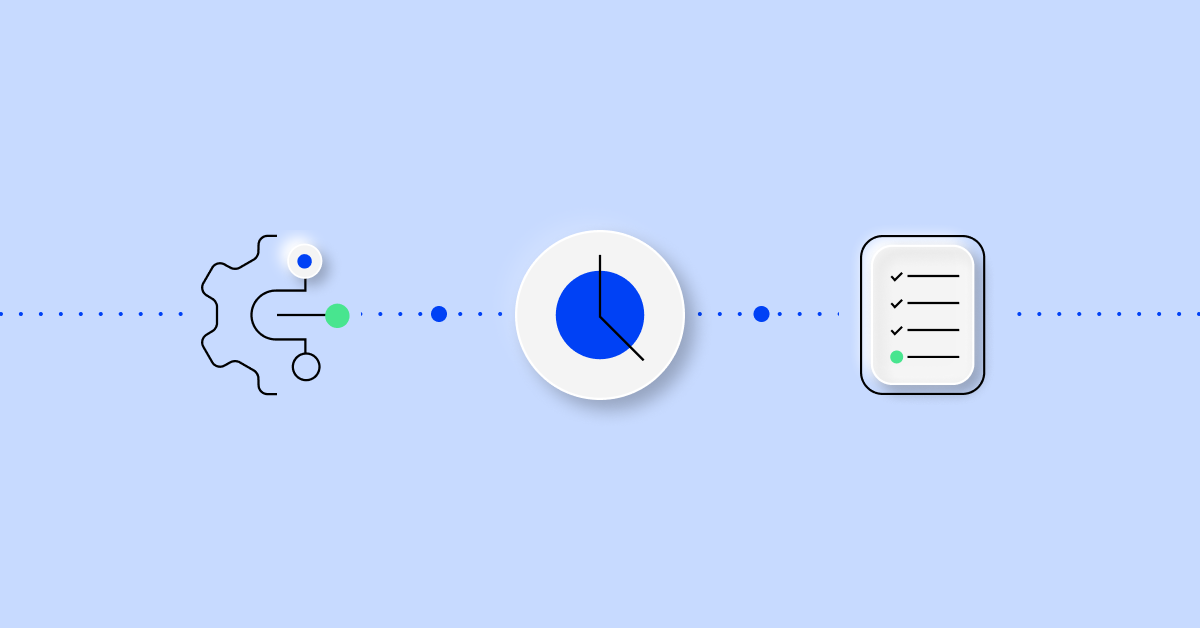The BigPanda agentic IT operations platform
BigPanda delivers agentic automation for ITOps and incident management teams in a single platform.
What is BigPanda?
BigPanda keeps the digital world running by transforming reactive, manual IT processes into proactive, intelligent automation. Our agentic IT operations platform uses AI to detect, respond to, and prevent IT incidents at machine speed, improving operational efficiency and delivering exceptional service reliability.
AI Detection and Response
Automate L1 operations and stop incidents before they escalate. Use real-time signals and intelligent automation to reduce downtime, eliminate noise, and resolve incidents faster with AI that adapts to your environment.
- Detect: Spot emerging incidents before impact using AI-driven correlation across observability, service desk activity, and external service provider dependencies to suppress noise and spot broader issues.
- Diagnose: Automatically surface similar past incidents, changes, and runbook actions to guide rapid issue diagnosis.
- Triage: Instantly assess the impact of what’s happening and prioritize what matters. Automatically understand the root cause and next steps.
- Respond: Trigger automated fixes or suggest next steps. Escalate only when necessary with content-rich tickets that help the right teams investigate quickly.


AI Incident Assistant
Give incident escalation teams an always-on AI partner to resolve escalations faster and prevent future issues.
- Collaborate: Replace manual incident coordination with autonomous agents that spin up incident channels, loop in the right SMEs, and summarize key findings in real-time.
- Investigate: Troubleshoot incidents dynamically in natural language to quickly reveal what’s happening, why, and how to fix it. Use AI agents to shorten the time spent accessing multiple tools and searching scattered documents.
- Automate: Build AI-powered workflows for common tasks in minutes, no code needed. Simply describe the automation using a drag-and-drop interface.
- Prevent: Predict the potential impact of changes by analyzing proposed changes with AI. Enable proactive adjustments, minimize change-induced incidents, and control costly rollbacks.
Real-time triage
“[AIOps] saves us time, letting us focus on resolving problems instead of combing through thousands of alerts to find the problem. It’s transformational and game‑changing.”
Faster incident detection
“Centralizing our operations with AIOps and BigPanda allowed us to have a much earlier MTTD, which gave us a head start to resolve operational incidents. BigPanda keeps our costs down.”
Fewer escalations and tickets
“Don’t wait to start your AIOps journey once you are overwhelmed with alerts. Start early to get a single pane of glass to understand which monitoring tools you really need.”
FAQ
What is agentic IT operations?
Agentic ITOps integrates autonomous AI agents into IT operations to detect, diagnose, respond to, and prevent infrastructure issues with little to no human input. The BigPanda Agentic IT Operations Platform enables this and so much more.
How does BigPanda provide additional context for enterprise ITOps?
The BigPanda agentic IT operations platform enhances incident context by ingesting and normalizing data from diverse sources, including topology, configuration management database (CMDB), and change data. BigPanda multidimensional alert correlation and AI Incident Assistant offer deeper insights and automate root cause analysis (RCA) for quick, informed decision-making. This comprehensive approach enables teams to resolve incidents efficiently using a holistic view of system interconnectivity and operational impacts.
Does BigPanda work across hybrid systems?
Yes. The BigPanda agentic IT operations platform supports both on-premises and cloud-based workloads and integrates with popular monitoring and observability tools. The BigPanda open integration manager also facilitates custom integrations. By unifying on-premises and cloud topologies, you gain comprehensive visibility across environments and identify opportunities to enhance digital transformation efforts.
Check out more related content
DEMO
See the BigPanda agentic ITOps platform in action.






